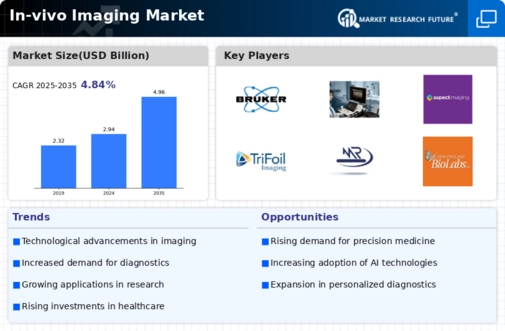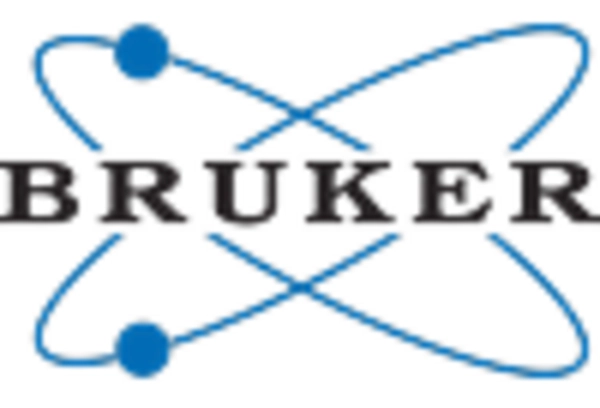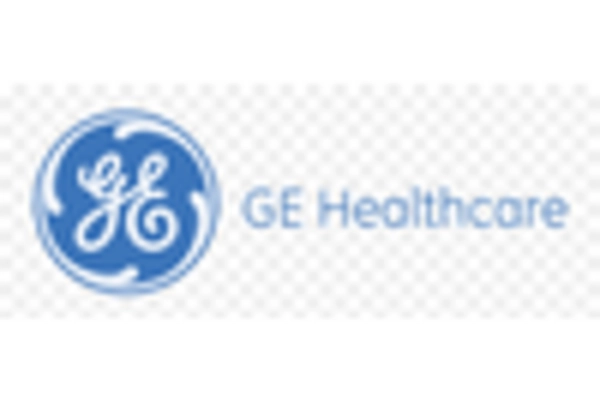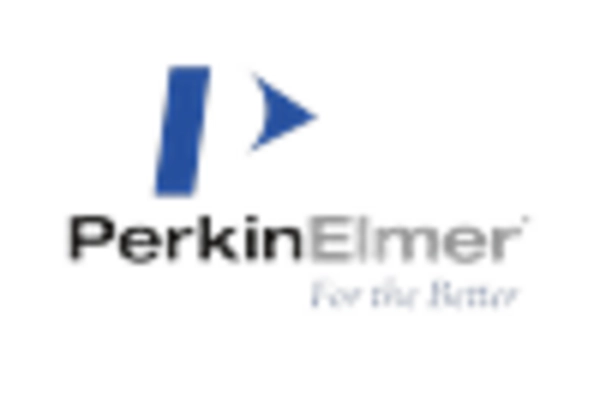In Vivo Imaging Market Summary
As per MRFR analysis, the In-vivo Imaging Market was estimated at 2.94 USD Billion in 2024. The In-vivo Imaging industry is projected to grow from 3.082 USD Billion in 2025 to 4.946 USD Billion by 2035, exhibiting a compound annual growth rate (CAGR) of 4.84 during the forecast period 2025 - 2035.
Key Market Trends & Highlights
The In-vivo Imaging Market is poised for substantial growth driven by technological advancements and increasing demand for personalized medicine.
- Technological advancements are enhancing imaging modalities, leading to improved diagnostic accuracy and patient outcomes.
- North America remains the largest market, while the Asia-Pacific region is emerging as the fastest-growing area for in-vivo imaging technologies.
- Nuclear imaging continues to dominate the market, whereas optical imaging is rapidly gaining traction due to its non-invasive nature.
- The rising prevalence of chronic diseases and increased investment in research and development are key drivers propelling market growth.
Market Size & Forecast
| 2024 Market Size | 2.94 (USD Billion) |
| 2035 Market Size | 4.946 (USD Billion) |
| CAGR (2025 - 2035) | 4.84% |
Major Players
Siemens Healthineers (DE), GE Healthcare (US), Philips Healthcare (NL), Canon Medical Systems (JP), Bruker Corporation (US), PerkinElmer (US), Medtronic (IE), Fujifilm Holdings Corporation (JP), Miltenyi Biotec (DE)


















Leave a Comment